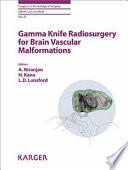
Transcranial Brain Stimulation for Treatment of Psychiatric Disorders
Transcranial magnetic stimulation (TMS) was introduced in the mid 1980s in clinical neurophysiology to study the central motor pathways. Research has been exponentially increased since, and many different methods for brain stimulation have been considered during the last decade. This publication focuses on transcranially applied, non- or low-invasive interventions not requiring an implantable device, i.e. electroconvulsive therapy (ECT), repetitive TMS (rTMS) and transcranial direct current stimulation (tDCS). It provides an excellent overview on this spectrum of fascinating techniques. Many leading experts in this field have contributed to this book. A single chapter summarizes the state of the art in ECT. A series of chapters provides an overview on preclinical research in animals and neuroimaging findings with rTMS and reviews the evidence of efficacy and safety in various psychiatric disorders (affective disorders, schizophrenia and anxiety disorders) also including an article on the application of rTMS in nonpsychiatric diseases, i.e. Parkinson's disease, stroke, pain and tinnitus. Finally, separate reviews discuss very recent innovative approaches in the field of rTMS, i.e. magnetic seizure therapy, theta burst stimulation and deep rTMS. This publication will doubtlessly prove to be essential reading not only to researchers in this field, but also to psychiatrists, neurologists and other clinicians who consider applying these new methods in clinical settings
- ISBN 13 : 3805581866
- ISBN 10 : 9783805581868
- Judul : Transcranial Brain Stimulation for Treatment of Psychiatric Disorders
- Pengarang : Marco Antonio Marcolin, Frank Padberg, Frank Padberg,
- Kategori : Medical
- Penerbit : Karger Medical and Scientific Publishers
- Bahasa : en
- Tahun : 2007
- Halaman : 230
- Halaman : 230
- Google Book : http://books.google.co.id/books?id=4965LnGt6RMC&dq=intitle:brain+basel&hl=&source=gbs_api
-
Ketersediaan :
Basel, Karger, 2007, vol 23, pp 187–203 Theta Burst Stimulation Ying-Zu
Huanga, John C. Rothwellb aDepartment of Neurology, Chang Gung Memorial
Hospital and Chang Gung University College of Medicine, Taipei, Taiwan, ROC;
bSobell ...







